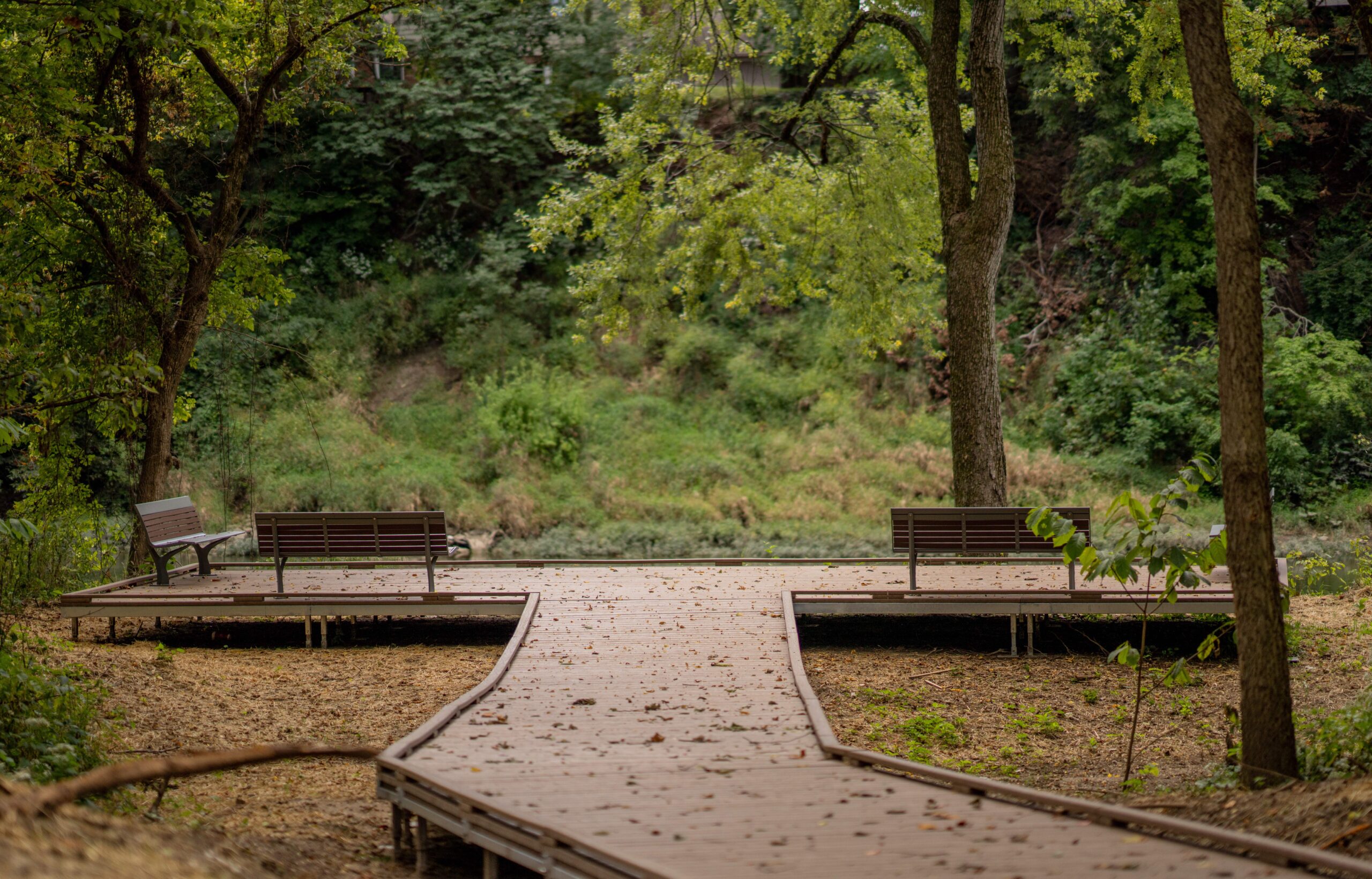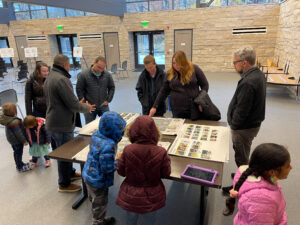Serving as a blueprint for parks and recreation in a thriving Carmel community
Carmel Clay Parks & Recreation (CCPR) is looking to the future as it puts the final touches on its 2025-2029 Parks and Recreation Master Plan. The comprehensive plan is the strategic vision for the department and establishes the goals and priorities over the next five years. This helps ensure that resources are used efficiently and effectively to meet the community’s needs.
“It’s the guiding document of the Department,” explains Kurtis Baumgartner, CCPR Assistant Director/Chief Operating Officer. “The planning process involved more community input than any plan we’ve ever developed, ensuring the needs and desires of residents are taken into consideration.”
The master plan is the culmination of several months of extensive community input. Research tools included a statistically valid survey, intercept surveys at parks and events, and meetings with focus groups including elected officials, Carmel Clay Schools, Carmel Dads’ Club, Carmel Mayor’s Youth Council, and Teen Library Council, to name a few. The responses were reviewed and analyzed to help the department craft a plan that reaches all populations, especially those not currently served by existing park resources.
The proposed 2025-2029 Master Plan focuses on four key recommendations: long-term funding, the White River corridor, west Carmel greenspace, and increased collaboration. These focus points underscore the CCPR mission.
Long-Term Funding
CCPR was founded in 1991 through an Interlocal Cooperation Agreement between the City of Carmel and Clay Township. Together these entities have worked for almost a quarter of a century to support parks and infrastructure. The Master Plan seeks to keep this momentum going through long-term funding options. CCPR is committed to working with elected officials to secure dedicated funding sources for future generations.
“When you’re looking at the big picture, our overarching goal is to serve the parks and recreation needs of the community at the highest level possible, ensuring we are good stewards of the property we maintain as well as good stewards of the tax dollars we receive,” says Michael Klitzing, CCPR Director of Parks and Recreation/CEO.
White River Corridor
Surveys and other research revealed a growing desire to take advantage of the White River corridor, Carmel’s most significant natural resource. Work has already started on a pedestrian bridge connecting Hazel Landing Park to Heritage Park in Fishers. The Master Plan also emphasizes corridor expansion, including the White River Greenway north extension. The project includes extending the Greenway north to 146th Street as well as the construction of a river overlook, parking lot and year-round restrooms. Once complete, the White River Greenway will span over five miles in Carmel. Based on resident feedback, CCPR leaders will continue to look for ways to help residents take advantage of the White River, whether kayaking or canoing or simply enjoying the sights and sounds of nature.
“Since the inception of the park system in 1991, embracing the White River corridor has been a priority. With the recent development of the White River Vision Plan, celebrating the river is not only a priority in Carmel, but also the region,” Klitzing says.
West Carmel Greenspace
Currently, Carmel has two parks west of Meridian Street, West Park and Bear Creek Park. The Master Plan envisions developing Bear Creek Park, a 27-acre plot at the corner of 146th Street and Shelbourne Road, which was acquired by the department in 2020. “Providing additional recreational experiences in northwest Carmel is a high priority for CCPR. We are excited to be one step closer to serving this underserved area of the community,” Klitzing says. Additionally, CCPR will continue to seek opportunities that could translate to future land acquisition in west Carmel.
Achieving More Through Effective Collaboration
Ultimately, the Master Plan is about making life better for residents. Data compiled from community input suggests an interest in additional special events and expanding opportunities for senior programming. To help meet these needs, the department will examine the potential for collaboration with the City of Carmel and community partners.
In the coming months, CCPR leaders will meet with the parks board and local officials to finalize the 2025-2029 Master Plan. Once approved by the park board, the plan will be the foundation for the department. Every theme and guiding principle will become specific goals for park staff.
“For me, this is one of the most – if not the most – important planning tool for the management of CCPR,” Klitzing said. “This is not something that sits on a shelf. It’s something that guides everything we do. It’s something that becomes a living, breathing document that is implemented throughout the organization.”
Written By: Lori Roberts


